








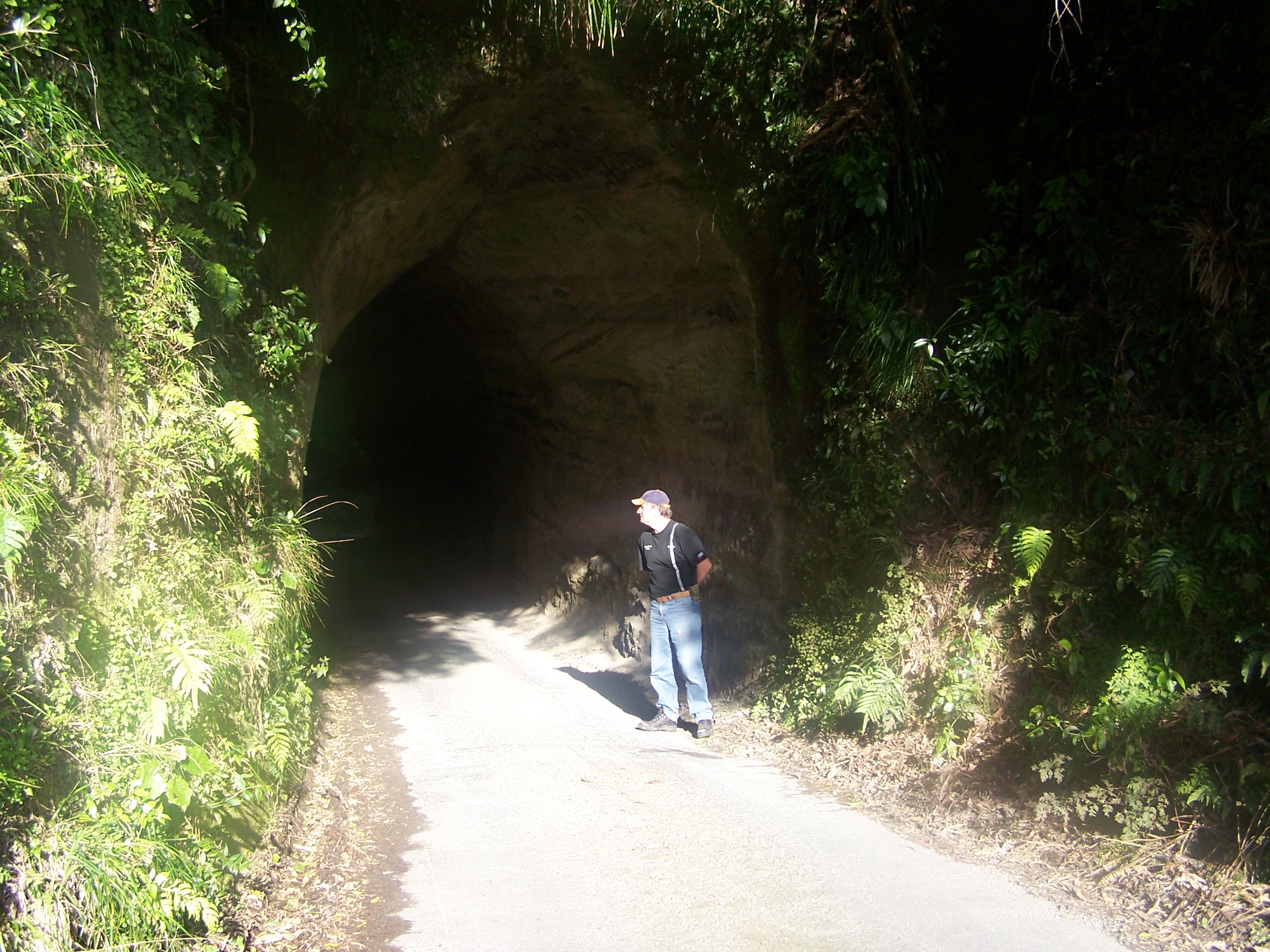
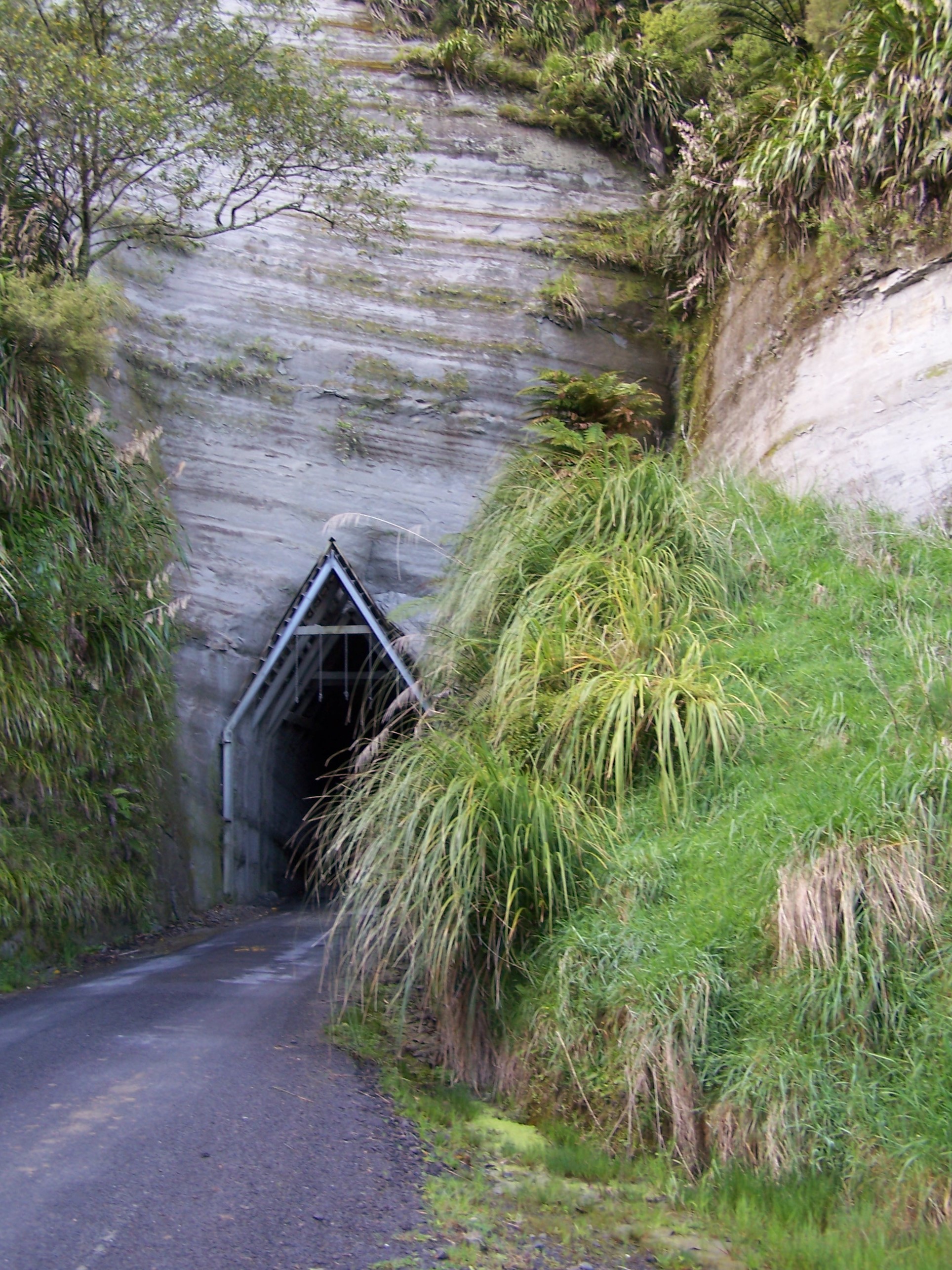
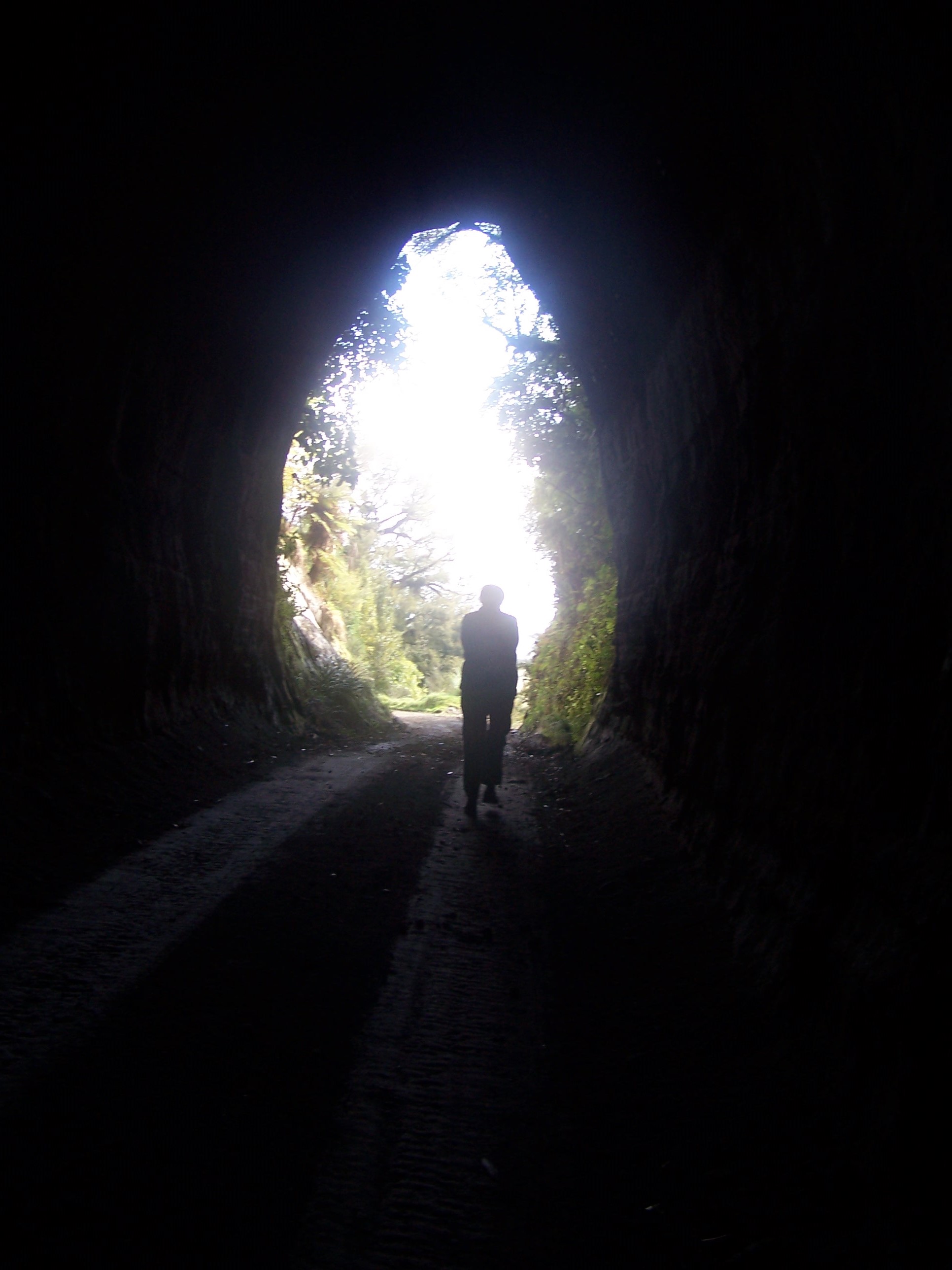
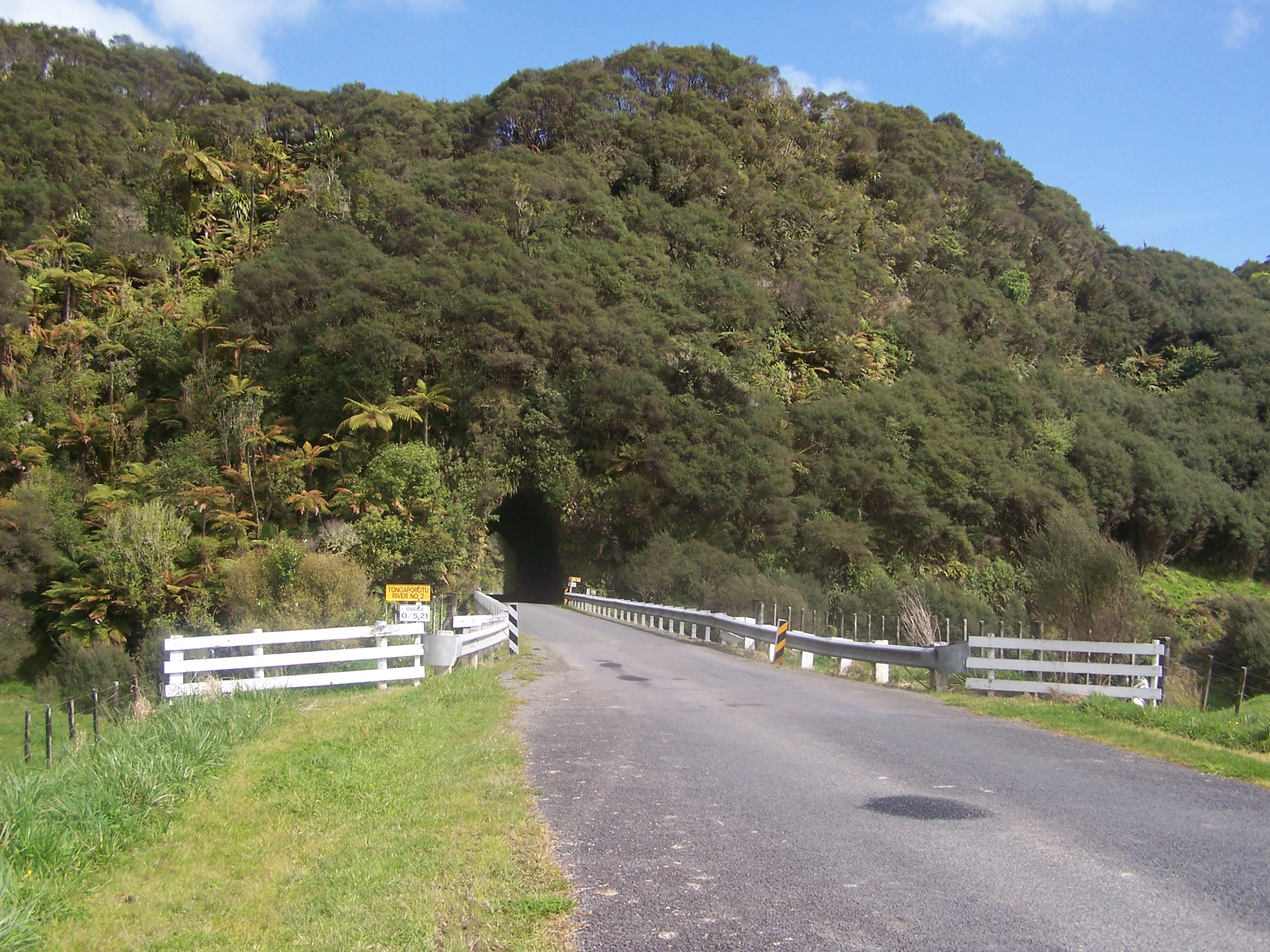
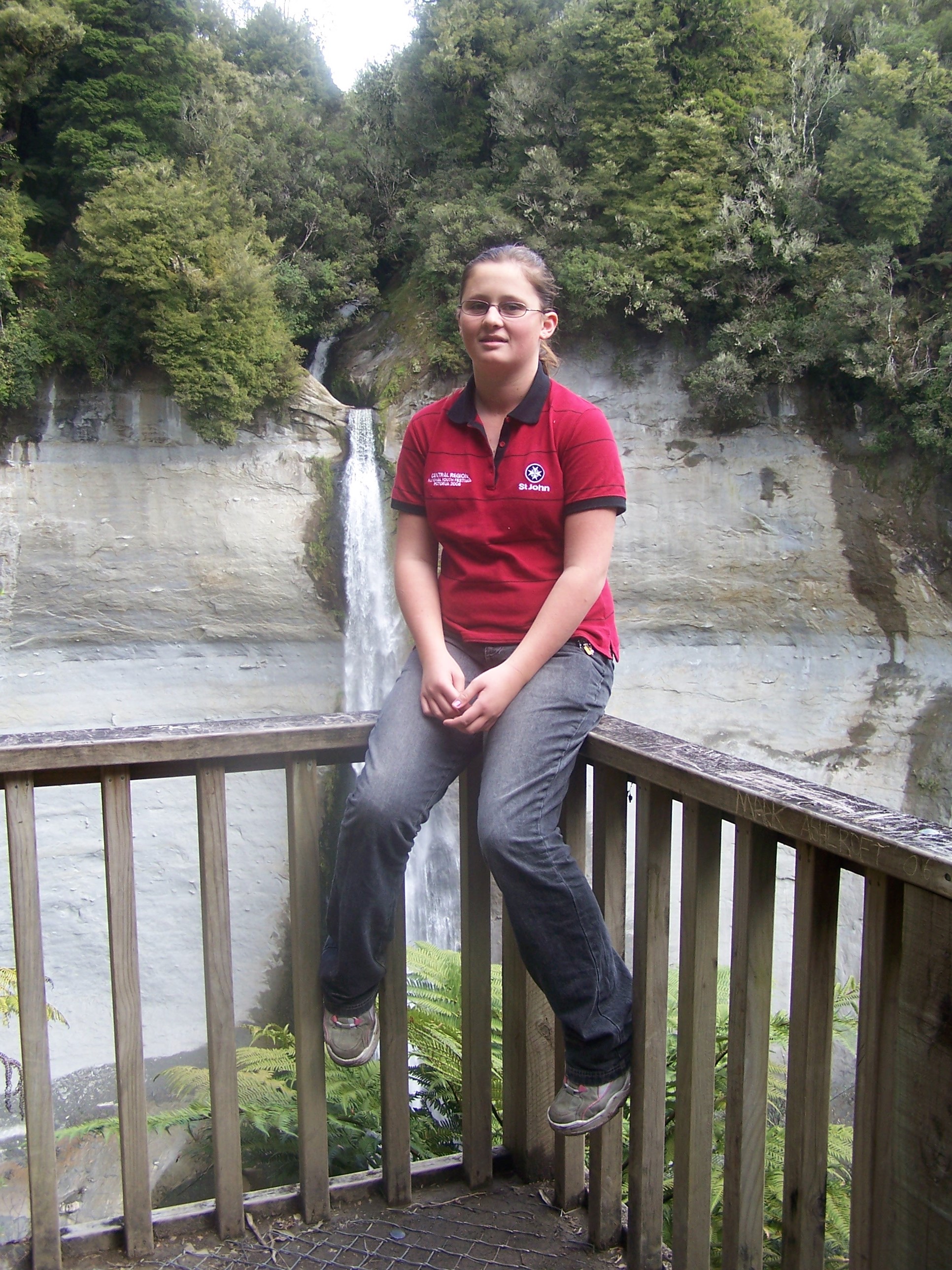
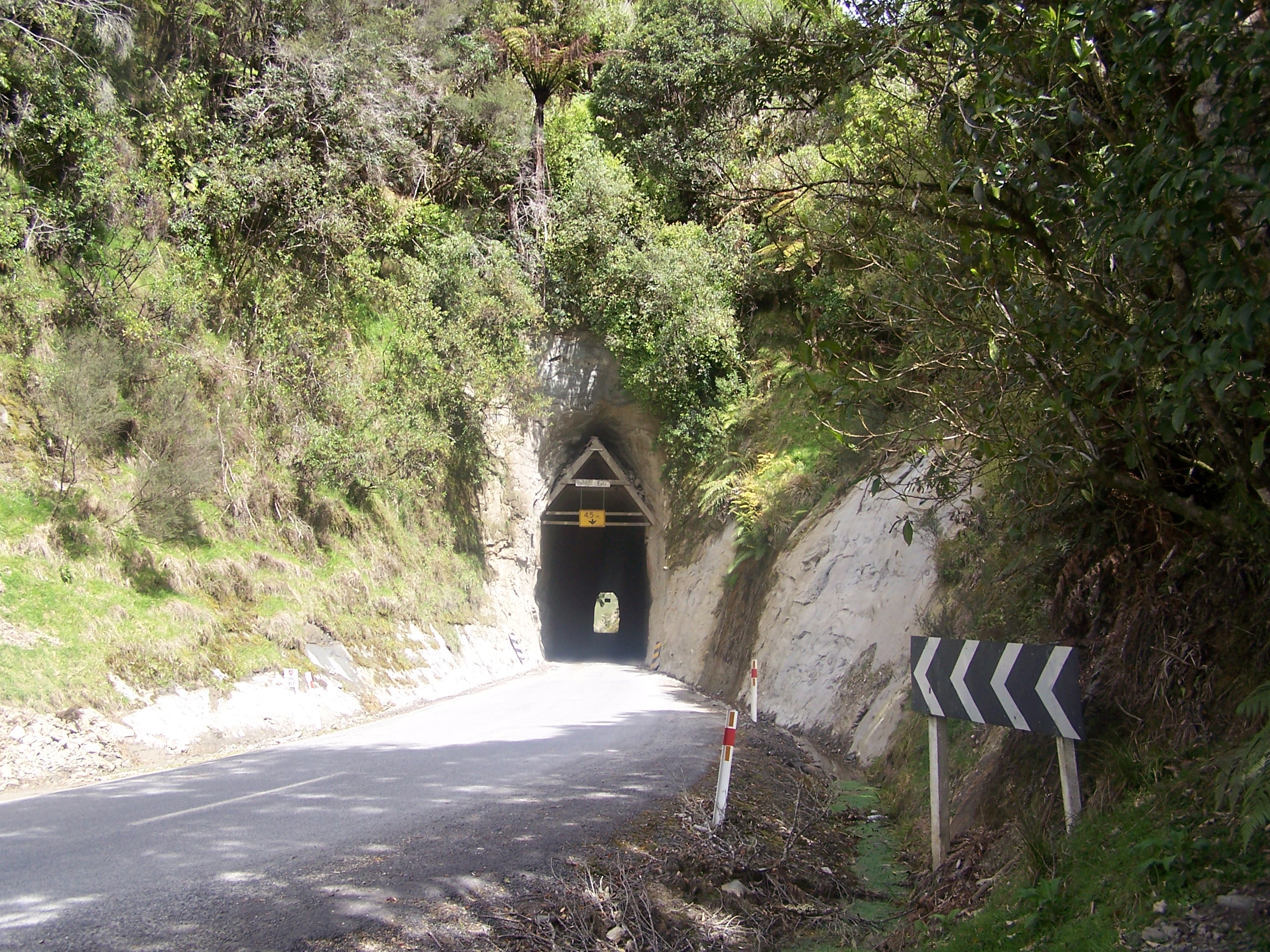
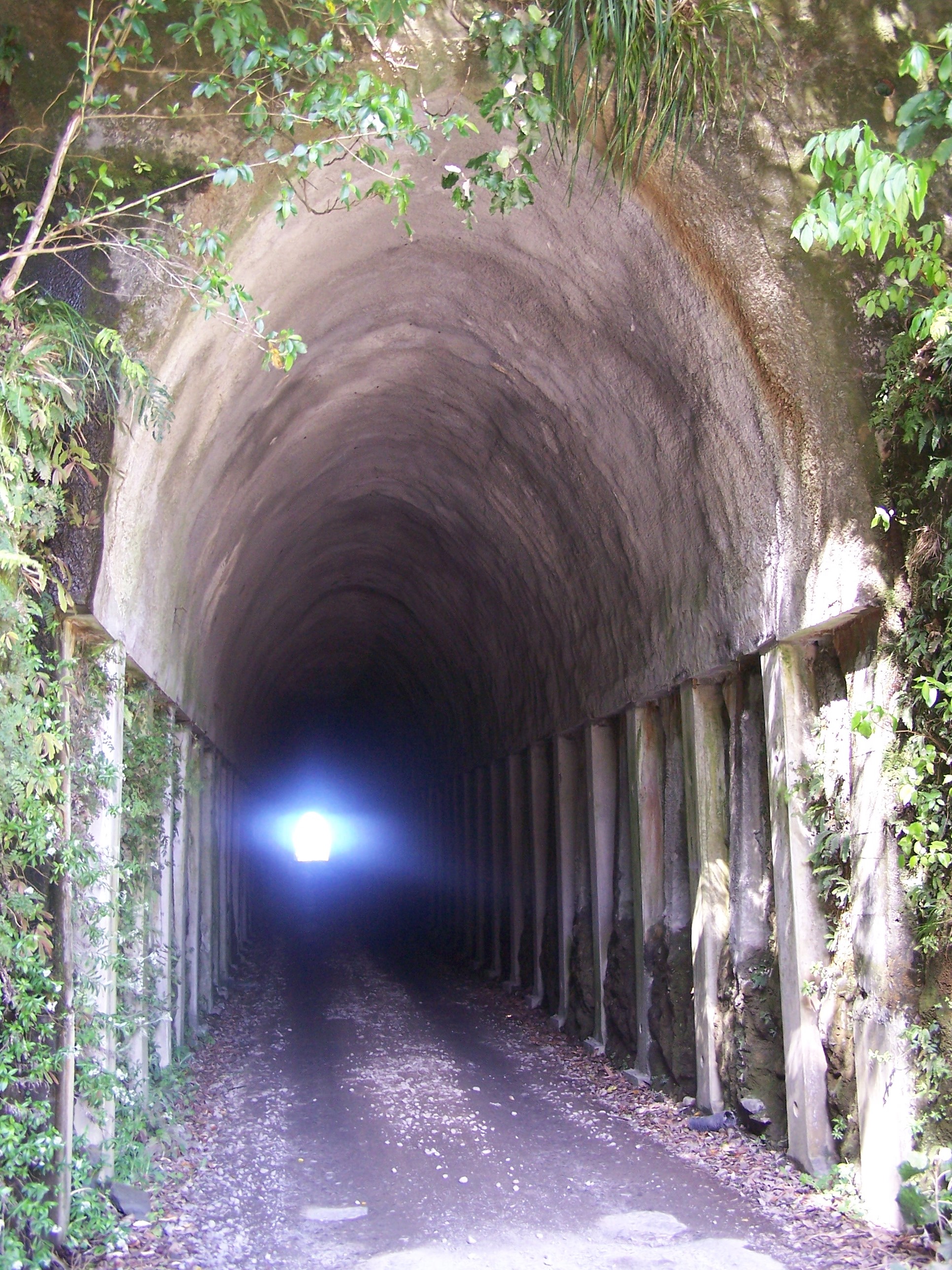
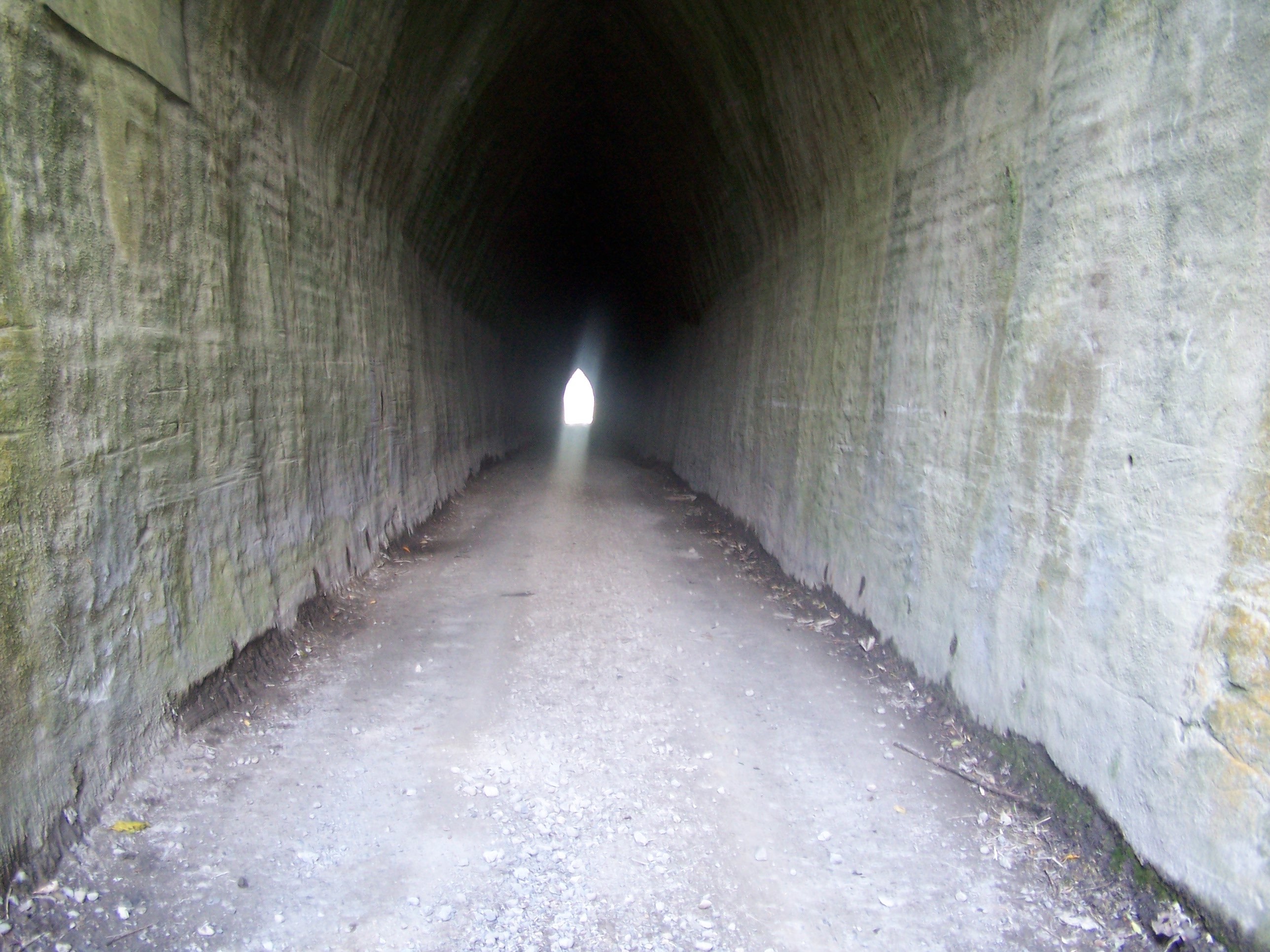
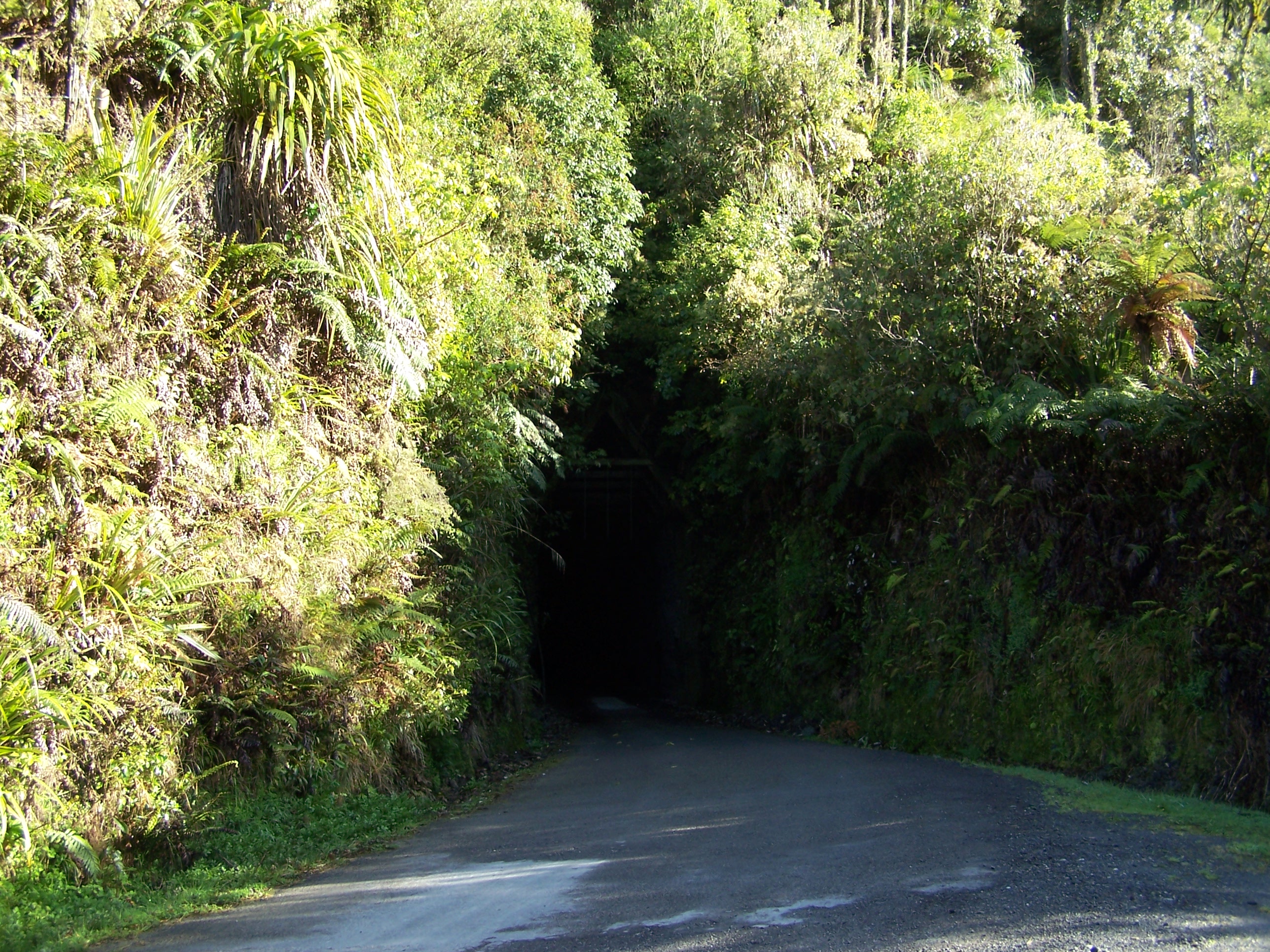
It's 8am on a fine day in October 2006, when Gary Fleming arrives in his 4WD to pick me up. As organiser of the Westown Scout Group Fundraising Tunnel Tour, he's decided to check the tunnels out before next week's money-raising trip. It's no good going through tunnels if you're going to get stuck beneath a collapsed sidewall or dodgy portal, but as the day reveals, there's little chance of that. I have a sneaking suspicion Gary does a dry run simply because he wants to.
With his daughter Caitlin in the back seat jotting down directions, we pull into the SH3 heading north from New Plymouth. Today, with just one vehicle behind us, carrying John and Elizabeth who can't make the official trip but don't want to miss out, we're away. The early sun shines through the window and warms even the map.
Not everyone knows that Taranaki has 14 unique tunnels but Gary can take you through eight in a single day. His planned route goes through the Urutī Tunnel, both Kiwi Road Tunnels, the Okau, the Moki, the Mākāhu, the Kiore (or Mangoapapa) and the Tarata tunnels.
An off-road and tramping enthusiast, you could probably get him to walk you through the Te Horo and Moki Stock Tunnels, as well as two on the old Whangamōmona Road which are 4WD only if there was enough time. The Mount Messenger and the Tangahoe Tunnels lie at opposite ends of the district and prove to be just a little too far away.
Gary, an architectural designer by trade, has been with the Westown Scouts for two years. He's developed a passion for scout-leading and enjoys taking the troops into the bush to teach them survival skills. Next week, he'll be leading adults through the winding countryside in order to raise much needed funds.
At $20 a trip plus an added $5 for lunch, the Tunnel Tour is a popular money-spinner, but more than that, it's educational and fun. It offers a tantalising glimpse of Taranaki history as well as a sightseeing trip through some of our less-known back country landscape.
The route transverses the very backblocks of Taranaki - from Ōkoki to Whangamōmona, through Strathmore and beyond - along roads that were once little more than bridle paths and wagon tracks cut into the papa. In better condition now, they still wind over high saddles and drop down the other side.
The tunnels, built by sheer hard labour, cut down on journey time and reduced the danger to travellers from washouts and mud slides. Every one passed through has its own personality and flair. Most were carved by workers using only shovel and axe.
As we leave the highway and take the Ōkoki Road past Urenui, the gorse is in full yellow bloom and the occasional old Land Rover marks a paddock. Sheep and magpies dot the land. Gary talks easily of his commitment to scouting, the joy of off-roading, the lure of the countryside. We hang a left into Urutī Road to find the first tunnel on our map.
The Urutī, with its sharp angled roof and hanging chains is perfectly-shaped and the vehicles stop. Elizabeth and I walk through, talk loudly to catch the echo, and take photos from both sides.
This particular tunnel vastly improved the lot of the Pehu residents, who used to cross the Waitara River into Matau country to get to Stratford to buy supplies. The only other alternative was to use the bridal track to Urutī.
Turning right into Moki Road at the bottom of the valley, we begin to climb steeply, past the long-deserted film set for The Last Samurai. It's still possible to make out where the mock village sat, but that's about all. We follow the narrow ridge and go left into Kiwi Road. The disused Moki stock tunnel, that we won't visit today, lies deep in the bush to the right, accessible by foot only.
Soon we come to the long Western Kiwi Road Tunnel, with its pointed ceiling and rafters guarding the portal. Elizabeth and I walk through this one too, holding back the urge to sing to take advantage of the acoustics. Gary drives through with plenty of room to spare. Chains hanging from the portal mark the tunnel's height for taller vehicles.
Afterwards, on the edge of the gully, we break out thermos and cups, lean on warm vehicles and drink coffee in the sun. If this is a casual Sunday hike, then I'm sold.
When we hit the road again, a hairpin bend near the bottom of the valley spins us into a half-spiral down onto the flat. The deep, high cuts in the papa cliffs here bear witness to man's need to get into this valley and out. Autumn-toned bracken and ferns brush the banks and a few young kauri trees poke their heads up from the bush.
Gary is saying how his first scout tramp was the first ever-experience of the bush for some of the boys. I hope they enjoyed the wildlife they found. So far we've seen goats and pheasants, and a hedgehog on the side of the road. "I think what I like most about scouting is that it teaches kids self-reliance," he says. "There's not a lot of self-reliance to be found in this world."
Not long after the Kiwi Road becomes the Moki Road, we see at the Eastern Kiwi Tunnel in a bank. Built in 1913, it's not a perfect hole, though the shape is exactly the way a child might draw one. This tunnel took two years to complete and today wears netting that's been bolted to its roof to keep loose papa from falling down. I point my camera at Elizabeth, who stands oblivious in the morning light shining through the northern side.
We keep on going, through the red-clay cuttings near Rerekapa and take the left fork into Okau Road. In the back, Caitlin continues to note directions for punters next week. Goats dash into the brush as we cruise by. "The Rerekapa trail heads right across the farmland, over a saddle to the head waters of the Waitara River," Gary says. "An hour and a half good walking. Quite a few of those tracks are paper roads. Some have been formed but some have been left."
We take a side-trip down the Okau Road to the Okau Tunnel. This tunnel is different again, bored through a bank on the other side of the Tongapōrutu River. We cross the bridge, where an abandoned white car has been ditched over the edge. It's fascinating what you see out here - stoat cages nailed to trees, forgotten farm machinery, a myriad of rusting car wrecks. No rubbish collection or transfer station round here.
We back-track, and head to Mount Damper on the Mangaopapa Road, stretching our legs beneath the Mount Damper Falls sign. We follow a walking track towards damp bush and dappled sunlight. The view is worth the 20 minute trek. At the spectacular waterfall, the highest in the North Island, water cascades down a smooth, sheer cliff into a green pool below, and continues as a tributary into the Tongapōrutu River. The viewing platform feels sturdy and safe. Caitlin sits on the edge and lets me take her photo.
Back at the vehicles, we eat lunch before we go. It's high noon and the only sounds are bird calls and insects.
Though it's hard to leave such quiet surrounds, the warmth of the vehicles and slow travelling pace make the drive pleasant.
Next on the list is the Moki Tunnel. Two signs proclaiming it The Hobbit Hole have been erected over each entrance, making us all wonder exactly how it was achieved. A ladder on the back of a truck is the general consensus. However they got there, they add to the tunnel's appeal.
One of five tunnels proposed by surveyor Joshua Morgan, who met an untimely death in the Tāngarākau Gorge, this one was dug with jack-hammers driven by a coal-fired steam engine. When it opened in 1935, it made a huge difference to settlers and visitors alike, improving travel over the Moki Saddle which had proved to be almost impassable in winter.
We continue on to Whangamōmona, along the Forgotten World Highway. It's 2.15 when we stop outside the infamous pub and swap stories about Whanga history - including the tale of the wood-fired kilns where blue papa bricks were cooked then broken up to provide gravel for the roads. Cheaper than carting real gravel in, the chips of red pottery can still be seen in some parts.
If we were to make a sharp left here, we'd find ourselves on the Whanga Road with its pair of unadorned tunnels, hacked through spurs that reach down to the river. But these days it's off-limits to all except mud-rats and bikers, so it's back in the cars again. We're off to find the Mākāhu Tunnel that lies on Brewer Road.
Soon, we leave the Ōhura Road for Strathmore. This is a side-trip too - we'll go back the same way. The handsome Mākāhu Tunnel is lined with concrete pillars, and walking it is great. I decide it's my favourite one. The old pillars have gone soft with damp but the $500,000 spent on the upgrade has provided good concrete and better support. It's easy to see where the floor was lowered to accommodate cattle trucks. Small orange stalactites droop from the ceiling. Outside, we pour coffee for afternoon tea and pass the chocolate biscuits round.
At the next turn-off, the Mohakau Road sign post has been swivelled round, which temporarily confuses the driver. But instinct takes over, and we find the Kiore Tunnel on the Mangaopapa Road in the direction of Pūrangi.
Though it's known by several names, Kiore in Māori means 'rat' so it's the 'rat's hole' to me. We walk through this one too, touch the concrete-sprayed walls that have stood the test of time, admire their shape and the clever workmanship. Time is marching on with only one more tunnel to go.
Just before Tarata, we take the Otaraoa Road towards Tikorangi. The Tarata Tunnel on takes us by surprise. Not much more than a dark opening in the ferns, it leads us through bank on a bend and out the other side. It's the smallest and most unassuming tunnel of all.
John and Elizabeth are leaving us here. Though there's very little room to stop, we do, shake hands and say goodbye. New Plymouth is only 40 minutes away. We have shared a genuinely lovely day, but it's time to go home.
By the time Gary and Caitlin drop me off at 6pm, we have spent 10 hours on the road, driven a leisurely 260 kilometres and seen an entirely different Taranaki to what residents usually see. We've got to know eight tunnels in an intimate fashion. The sun, the trip and the company has cheered me, as it surely will the followers of Gary Fleming's official tour next week.
Dudding, I. (1999). History of the Te Horo Tunnel. New Plymouth: Te Horo Tunnel Restoration Society.
Gray, B.E. (2000). The Tongapōrutu River Valley: a history of the combined districts of Tongapōrutu, Ahititi, Okau, Kotare, Rerekapa. Inglewood: Tongapōrutu Historical Committee.
Hagenson, C. (1997). Tongapōrutu, Ahititi, Okau : centennial booklet 1897-1997. New Plymouth: Aries Print.
Please do not reproduce these images without permission from Puke Ariki.
Contact us for more information or you can order images online here.